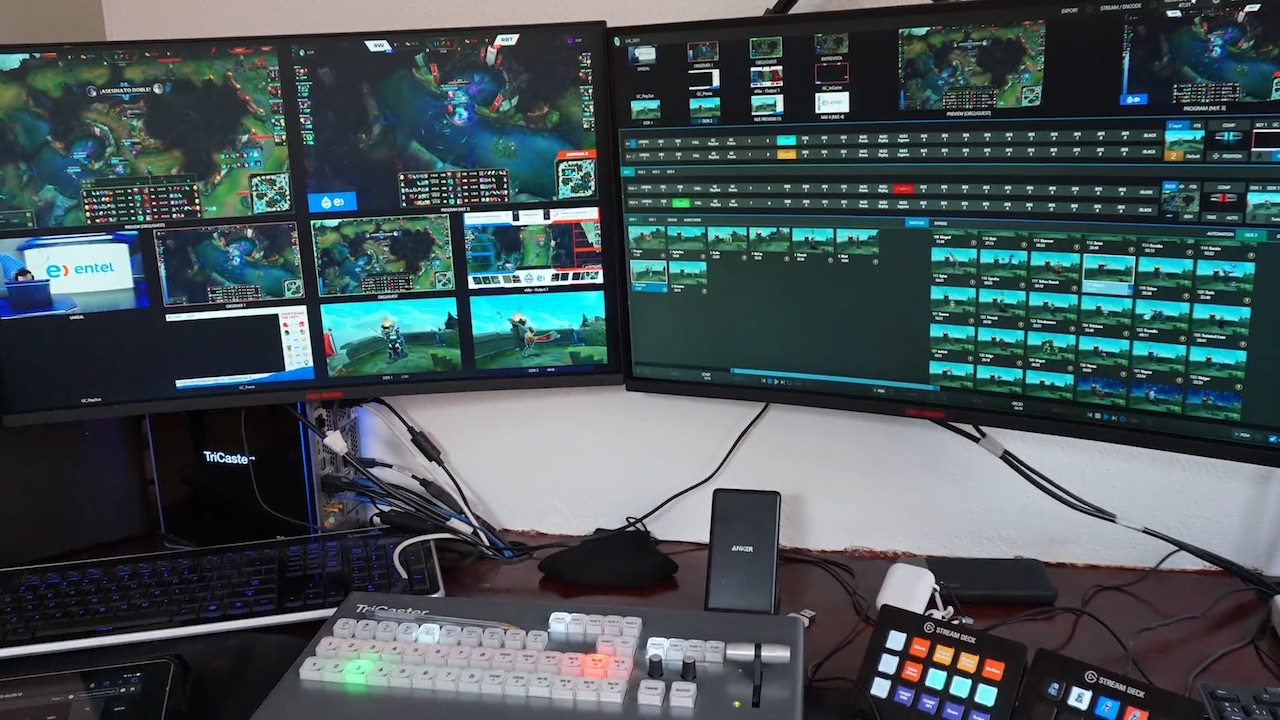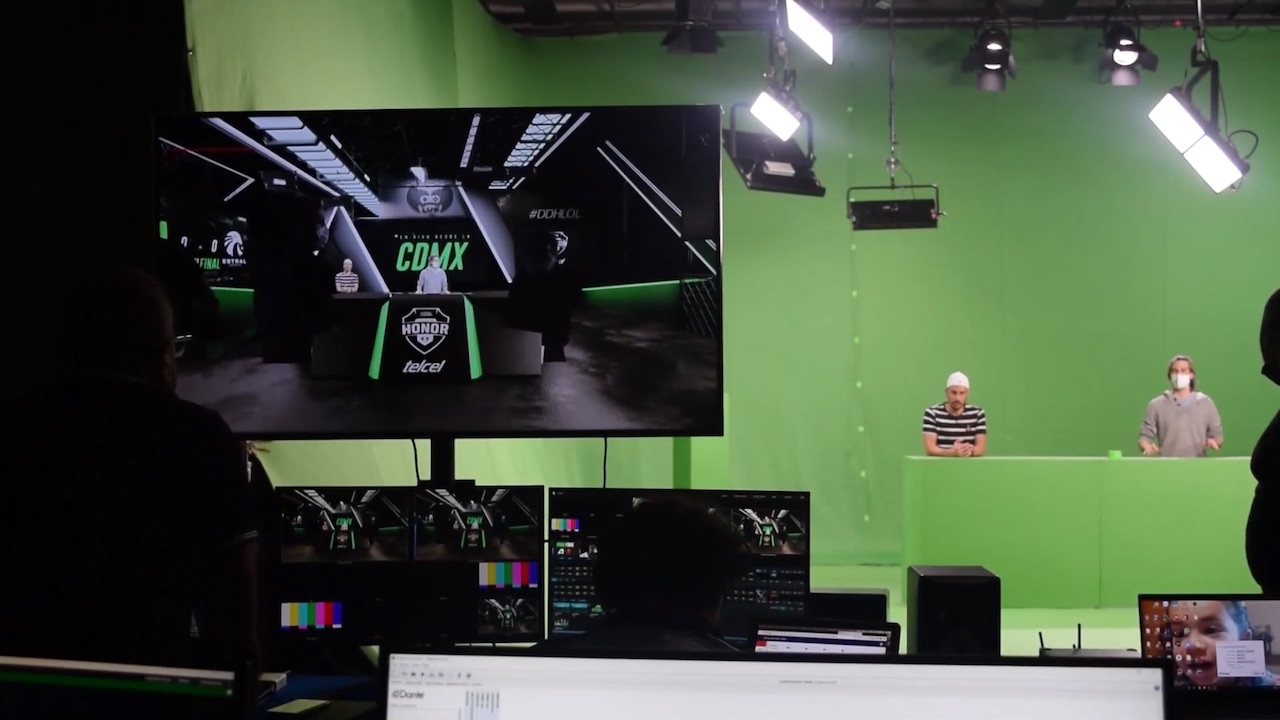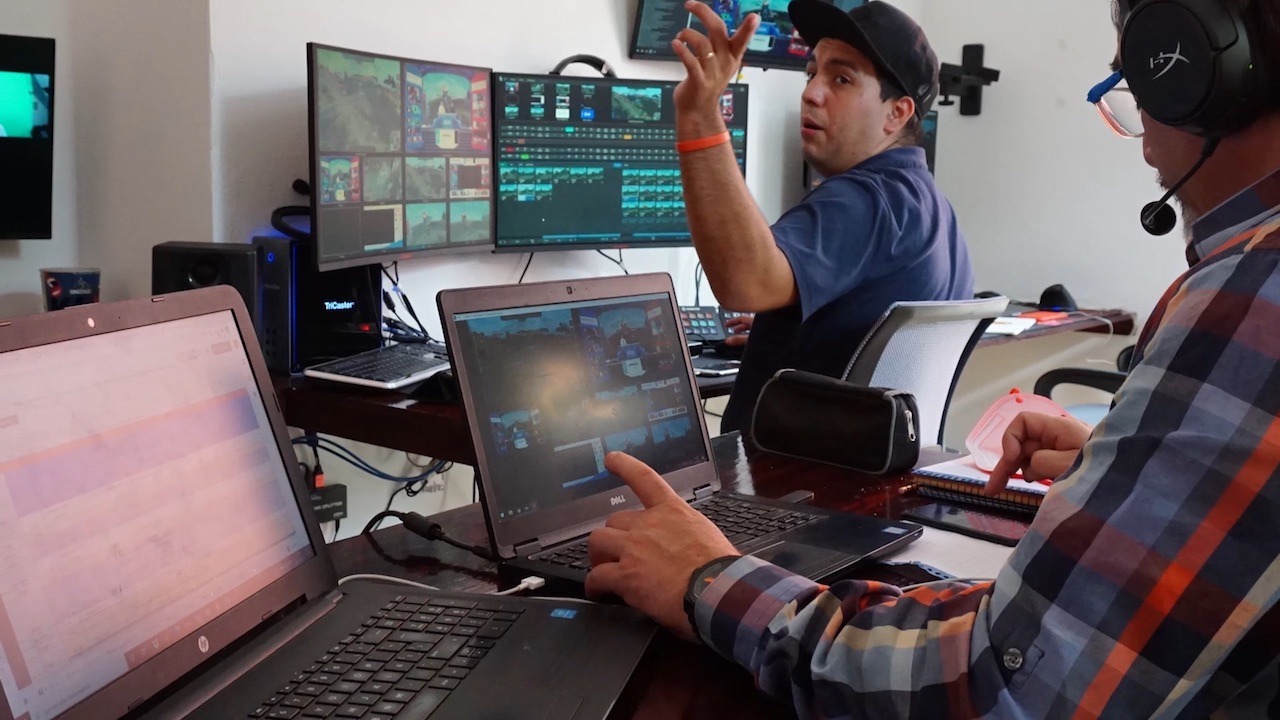In 2020, Latin American video production company LocalGames realized their traditional workflow for producing live broadcasts of esports tournaments was completely unworkable during COVID-19 restrictions. Gaming tournament broadcasts, which are the company’s lifeblood, would continue, but all competitions would be virtual. No spectator-packed venues, no competitors on-site, international borders closed. The company was given just over a week to adapt to that change.
“Because all our content is on network, we require a workflow that allows us to efficiently stream video to the network,” said Bernardo Pizurnia, CEO of LocalGames. “And that’s why we chose to go with NewTek. Their products are designed with livestreaming in mind.”
[The Technology Manager's Guide to Streaming]
To accomplish their post-pandemic goals, LocalGames purchased a TriCaster Mini 4K live production system. For LocalGames, purchasing their TriCaster was more than just a workflow efficiency decision. It also made financial sense.
“We are competing against traditional production companies with traditional workflows for these production jobs,” Pizurnia said. “With their old technology, their end product is very expensive compared to ours, and ours is much more versatile because the workflow is already designed to stream. That’s one reason we’re as successful as we are.”

Many staff members at LocalGames came from that legacy world of broadcast production, but as Rodrigo Cotiart, broadcast engineer and chief TriCaster operator for LocalGames said, “I found the TriCaster to be very easy to learn. And I’m not the sort of person who likes to read manuals. I’m much more of a doer. That’s the way I learn. So, I just got in there, sat down at the TriCaster, and got my hands dirty. I found it to be very intuitive. That’s how I learned to record macros, create camera presets, modify the Multiview, and build buffer animations. I can’t stress enough how important it is to get your hands dirty. I still haven’t read the manual.”
Just like any other sports broadcaster, replays are an important production tool in LocalGames’ production arsenal, and the company has made use of NewTek’s 3Play to produce instant replays for their esports programs. The reliability and versatility of the 3Play was one of the reasons LocalGames felt so comfortable turning to NewTek when the pandemic hit.
“I was used to using EVS or K2 for replays back in my broadcast days,” Cotiart said. “The transition to using 3Play was extremely simple. The only thing that changed was the location of the buttons. And honestly, I find the 3Play to be much more versatile and dynamic than those other machines, and all at a much smaller price point. Our experience with the 3Play has been nothing but positive.”
LocalGames makes extensive use of NDI (Network Device Interface), a software standard developed by NewTek that enables video-compatible products to communicate, deliver, and receive high-definition video and audio over a computer network in a high-quality manner suitable for switching in a live production environment.
“Even before we bought our first piece of NewTek gear, we were using NDI under the free protocol,” Pizurnia said. “And since we knew the power of NDI, it made sense to go with NewTek products when it was time to make upgrades."
The company also owns four NewTek Spark Plus units, which play a vital role in their redesigned productions. Spark Plus converters allow producers to capture video from digital cameras and other devices wirelessly or over an Ethernet network. The Spark unit converts HDMI or SDI video sources to NDI making it available as a video source.

While many Spark owners use their units to integrate remote cameras anywhere on their network into a TriCaster, LocalGames found a unique way to use the versatile devices. After purchasing their TriCaster Mini 4K, the company had legacy, non-NDI equipment they needed to continue to use. Plugging that legacy equipment into a Spark device allowed LocalGames to continue to use this old equipment and still utilize all the technological advantages their TriCaster offers.
Just a few short days after their world had been turned upside down, LocalGames’ first redesigned broadcast, powered by a new TriCaster Mini 4K, went on the air.
“That first broadcast was accomplished with video boxes over a graphic background,” Cotiart said. “Then we realized we could do more, and that’s when we started adding virtual sets using NewTek’s Virtual Set Editor.’
That capability was easily accomplished as it’s natively built into the TriCaster. The next week, the broadcast featured its hosts sitting on a freshly designed virtual set. The clients liked what they saw and pushed LocalGames to expand their productions even more.
“It seems strange to say this, but COVID actually made us a stronger company,” Pizurnia said. “It pushed us to find new tools, to use virtual sets, to incorporate Unreal Engine. It pushed us into the future and forced us to make the most of the latest technologies.
“The growth of our company has been exponential. I don’t honestly know where we can get to in the future, but we are rolling at top speed and a whole new world of possibilities has opened up to us.”
